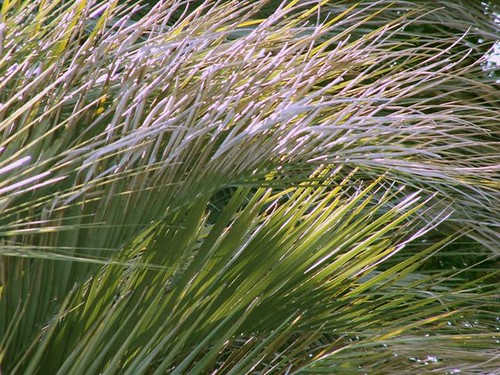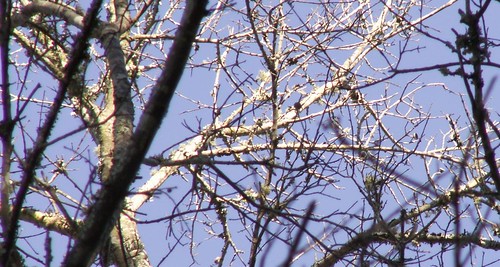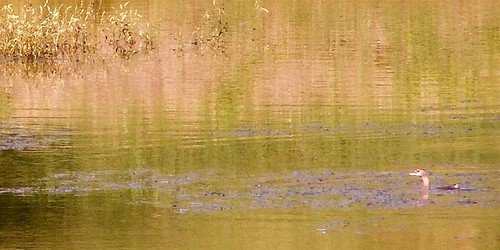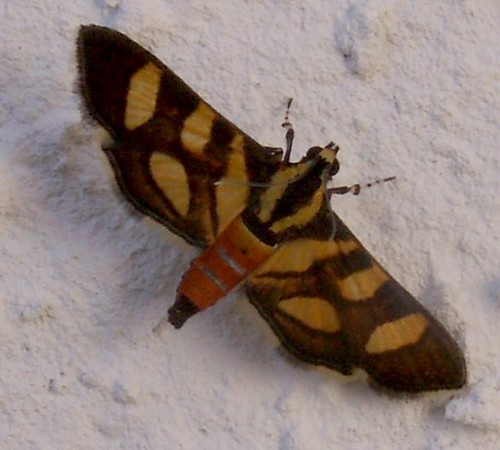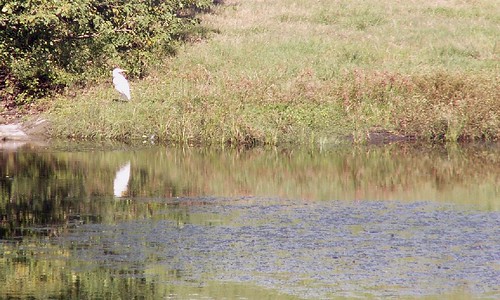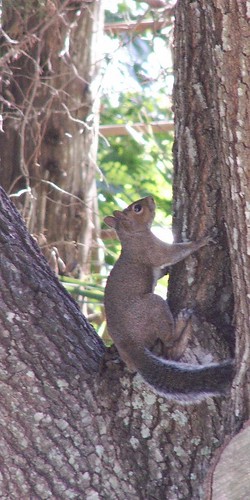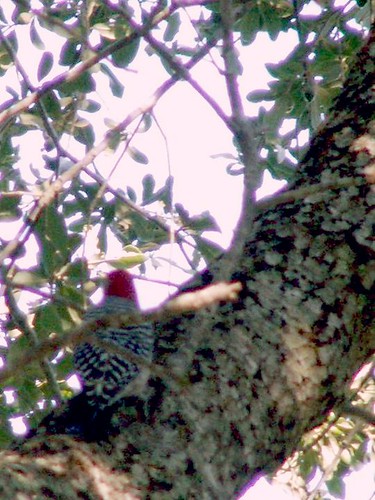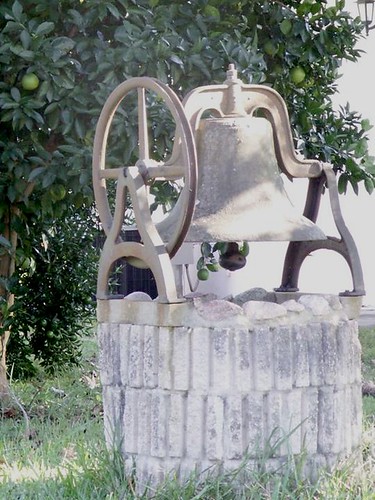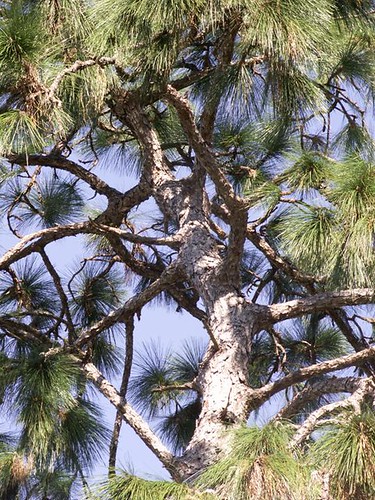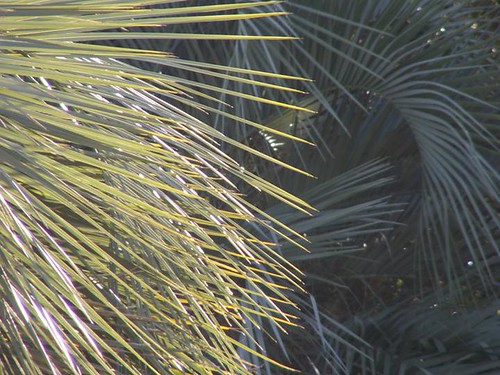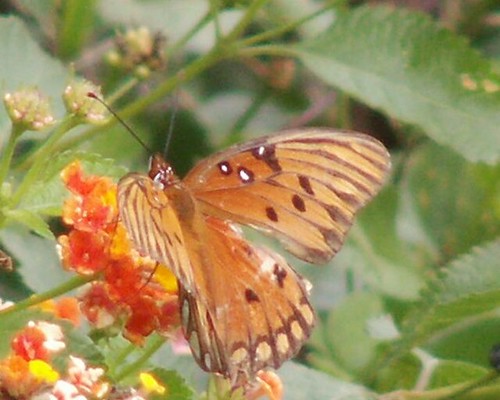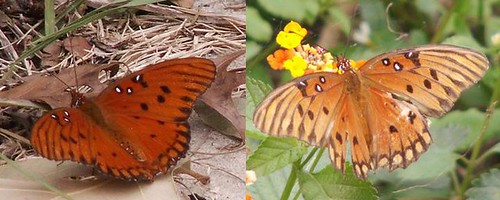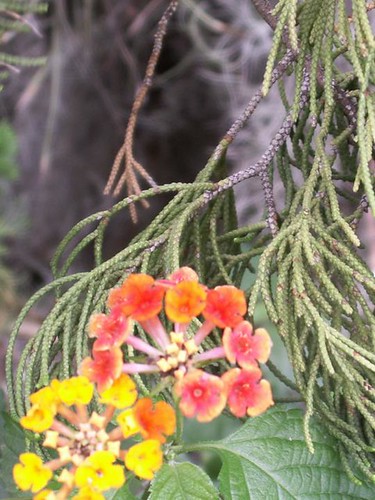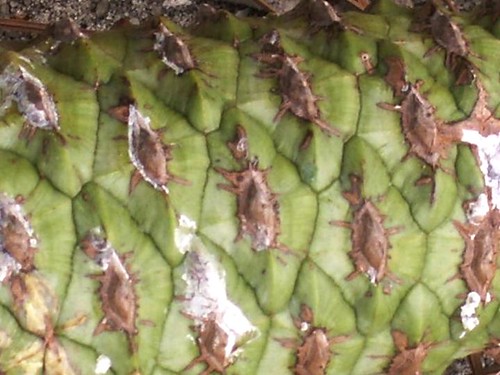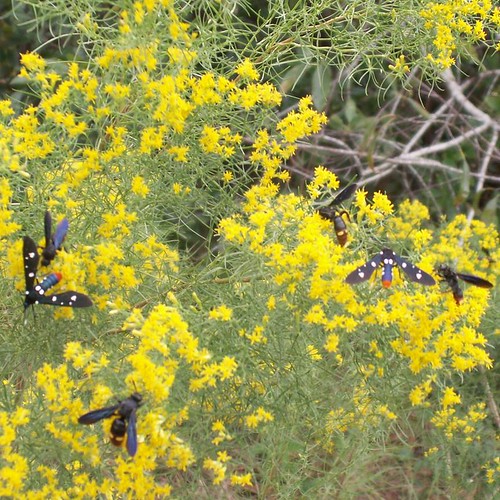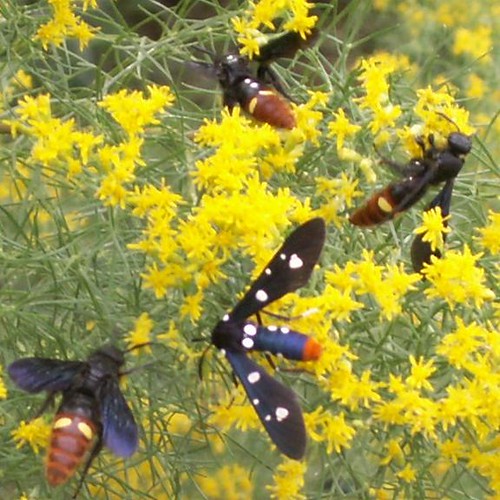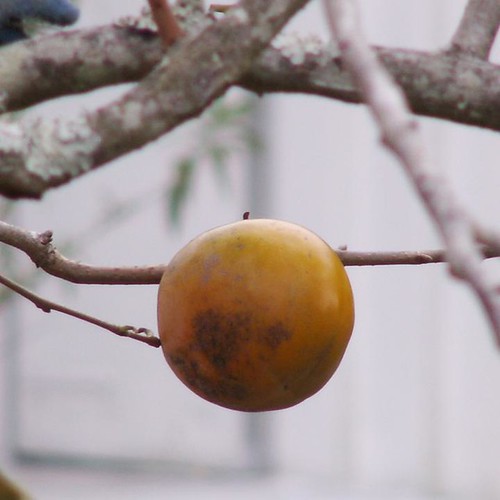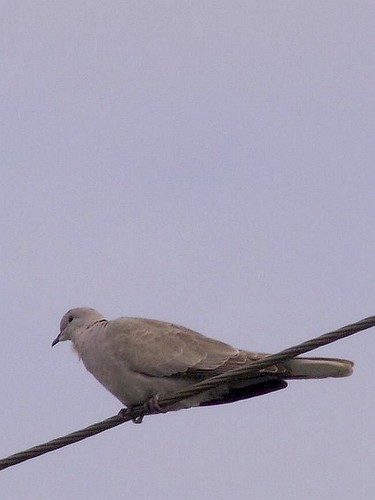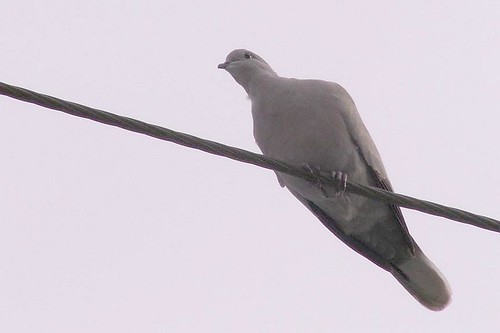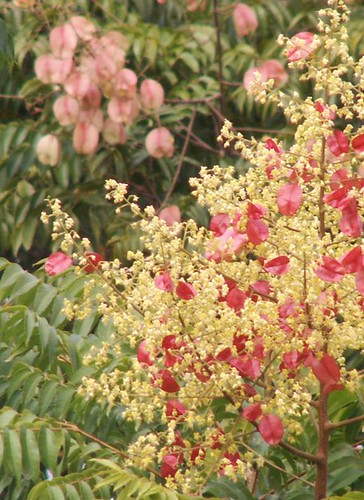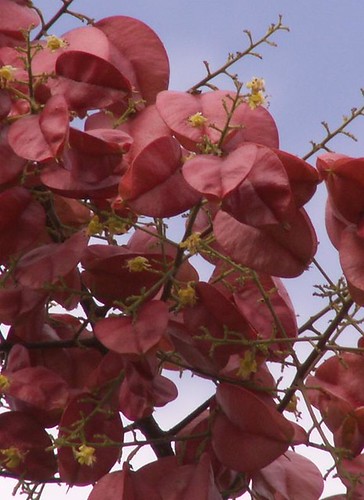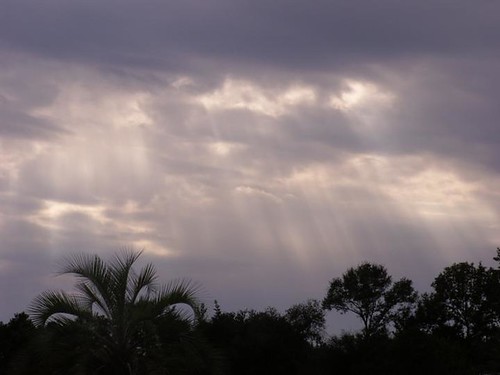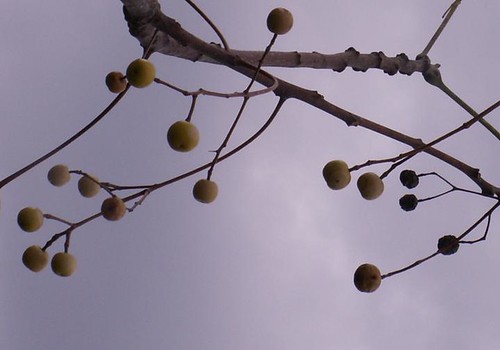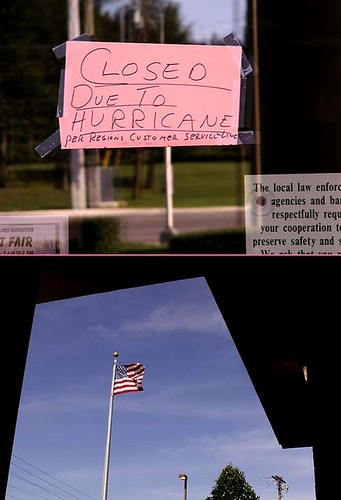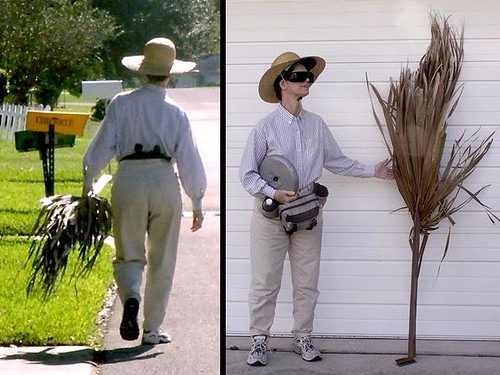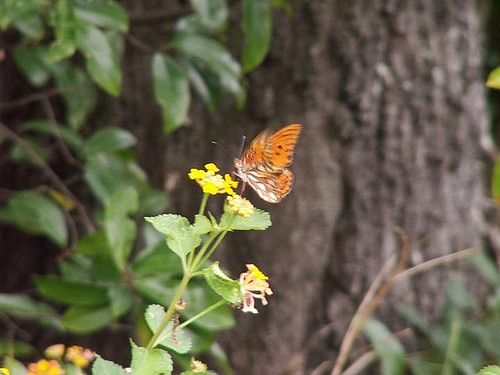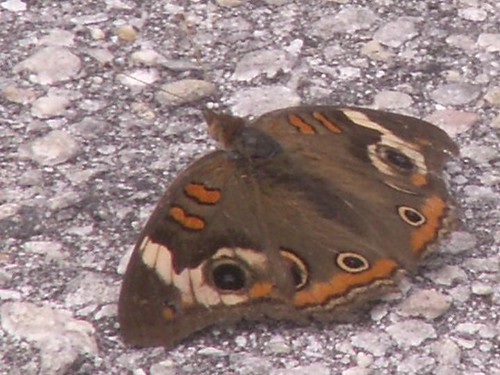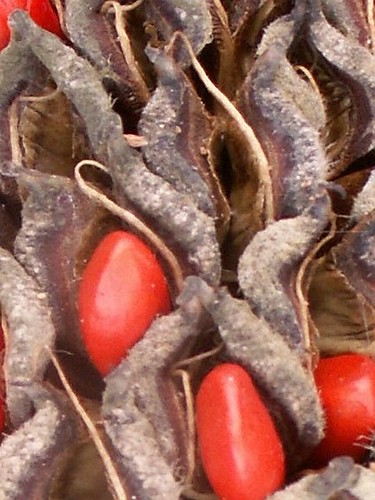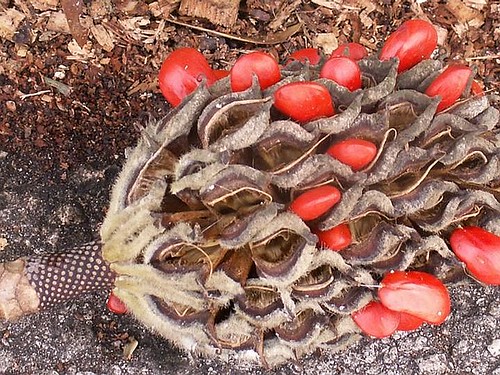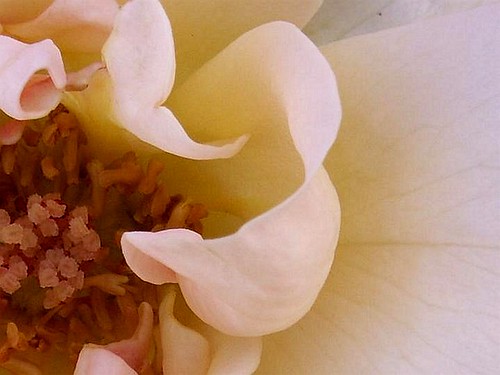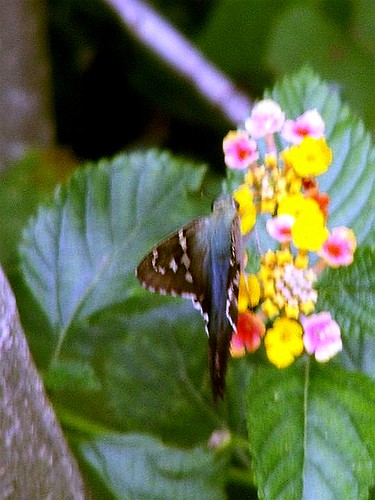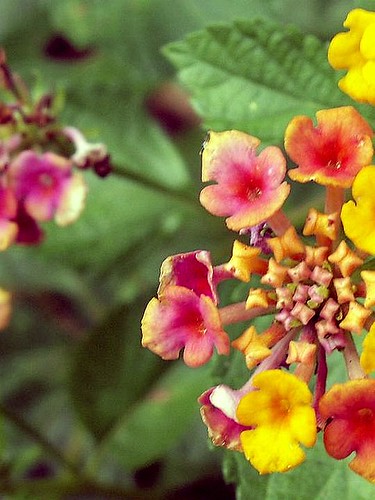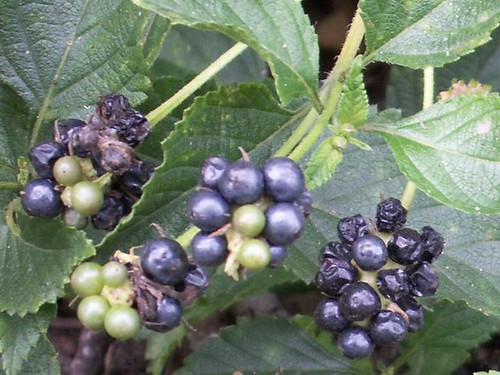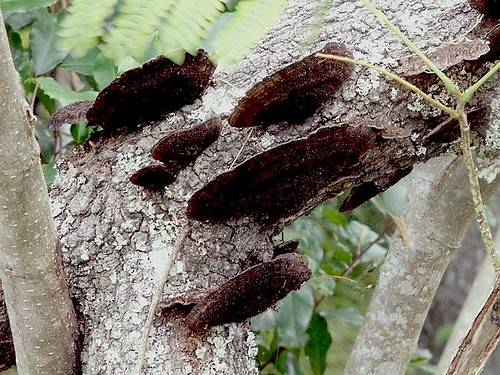Halloween and Samhain Greetings
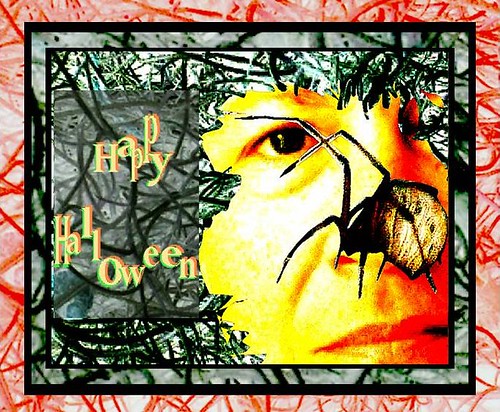
The spider had been manipulating prey in our back yard. The filaments are Spanish moss.
(I am not all that jaundiced in real life.)
"You got Hot Wheels stickers?" Mary flips the cards in her hands. "Why?"
"Variety." I show her my other purchases, which include 3-D plastic flower and Finding Nemo stickers. They join our leftovers from last year, which include flat paper stickers and plastic glow-in-the-dark creepy-crawlies (scorpions, spiders, worms).
She frowns. "You couldn't get Matchbox cars?"
"They didn't have Matchbox cars. They had Hot Wheels."
(I understand her chagrin. I used to collect Matchbox cars. Hot Wheels just weren't the same.)
I stopped giving out Halloween candy in 1983, the first year I lived on my own. Instead I offered stickers. A friend accused me of being a "meanie"; neither of us knew how popular the stickers would be. They still get a good reception....
For 11 months out of the year we didn't have candy in the house where I grew up. (Entenmann's pastries, yes; candy, no.) My father started buying bags of candy on October first, "for Halloween." They were destined to run out well before the holiday, which gave him a good excuse to make the next haul, and the next, until finally we were stocked for actual trick-or-treaters. It would have been a cuter strategy had my mother not been diabetic; trying to resist the Entenmann's had been challenging enough.
I had two favorite costumes when I was a kid: I went around the neighborhood as either a witch or a gypsy. (I did not want to be a princess, though I was a devil at least once and remember that only because somewhere there's a picture of it.) I carried the witch motif into adulthood, dressing in black and setting my newly-washed hair into numerous tight, thin braids before going to bed the night before. In the morning I brushed the braids out vigorously and watched my hair spread out into a glorious, wild halo that would last all day and into the night.
After the last trick-or-treaters left, it took me at least an hour to comb out all the knots.
We don't do anything to the yard, but Sunday evening we got in a six-mile walk and admired what some of the neighbors have put together. Inflatable archways, statues, motion-activated recordings. Skeletons and huge spiders (more huge than the usual ones, that is, and plastic) in palm trees draped with enormous faux webs. One guy was disappointed that his laser wasn't working, but he could still use his smoke generator.
(Cue Shaker hymn: "'Tis a gift to be simple, 'tis a gift to be free....")
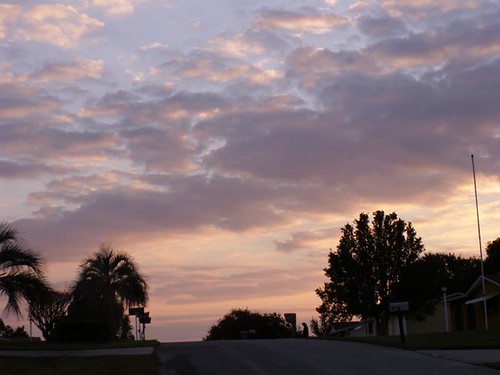
I didn't take any shots of decorations, but a couple things caught my eye as we steadily lost the light.

I first whipped out the camera when I spotted a mockingbird perched on the tip of a branch. These are three successive photos, a bit unfocused because my shutter speed had slowed.

The sunset had turned our water tower pink; by the time we reached it the light level had dropped considerably. Except for cropping, the first two photos are "as is" out of the camera. I've sharpened the third photo slightly, and sharpened and "embossed" the last photo.
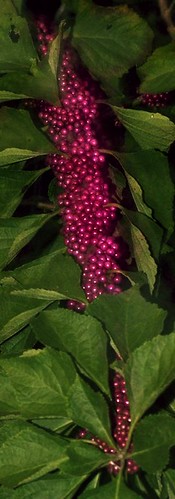
I don't know what these berries are, but I popped up the flash to photograph the clusters once the sun had set.
Mary and I did some late grocery shopping on our last leg home. On the wall of the strip mall near the supermarket I spotted a tersa sphinx moth.
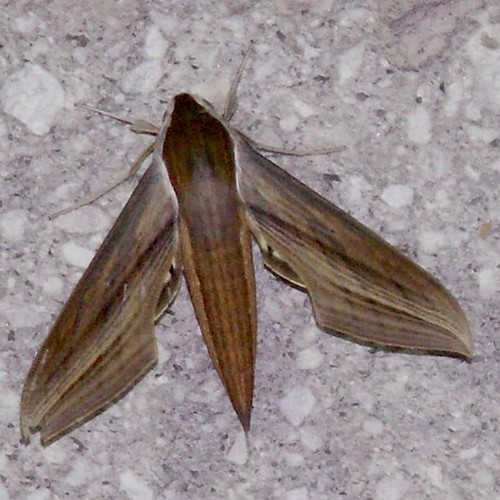
The last time I'd photographed one of these was before I'd gotten the new camera, and the form was barely recognizeable. I love the fine woodgrain look of these things. According to this site, "Sphinx Moths are also called hawk moths because their wings resemble hawks' wings in shape, and because of their strong flight and hovering ability. They can fly at speeds of up to 25 mph."
Magic is afoot. Not just on Halloween, but every day.

